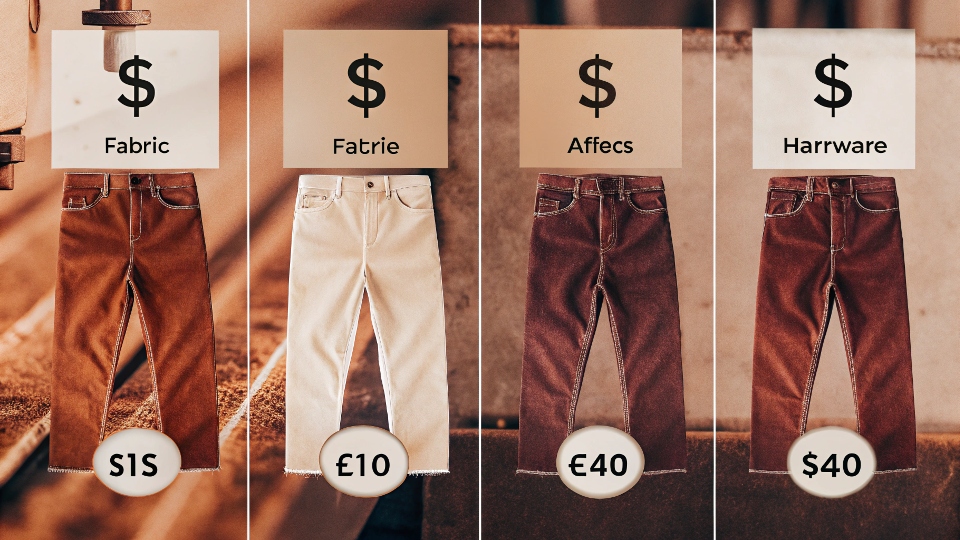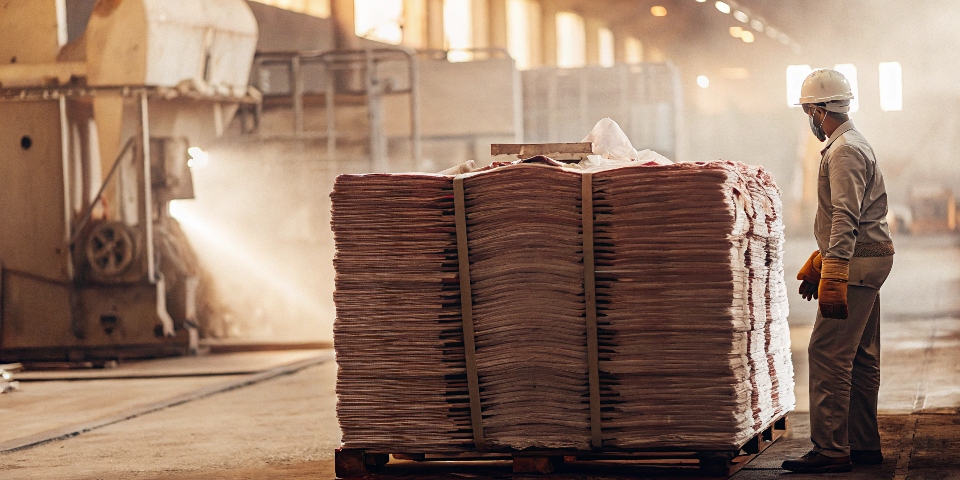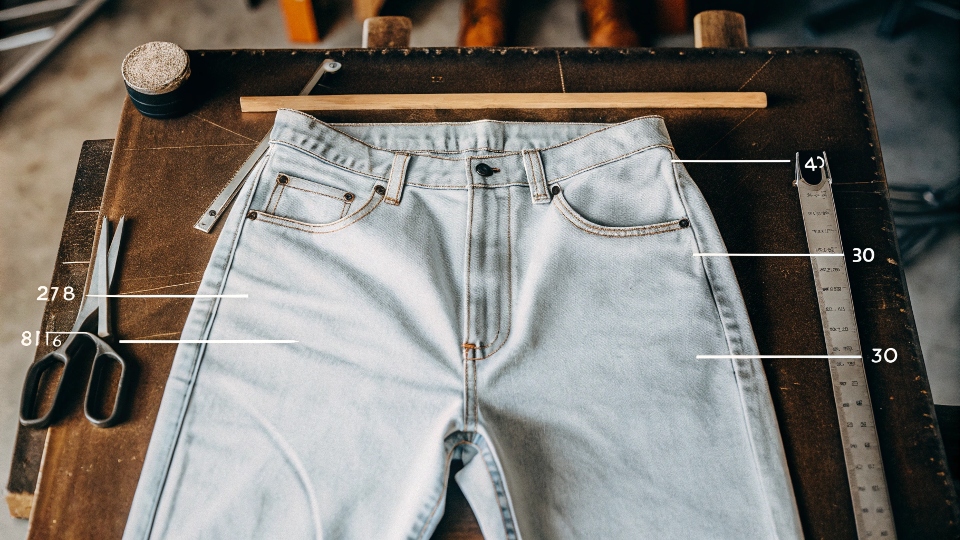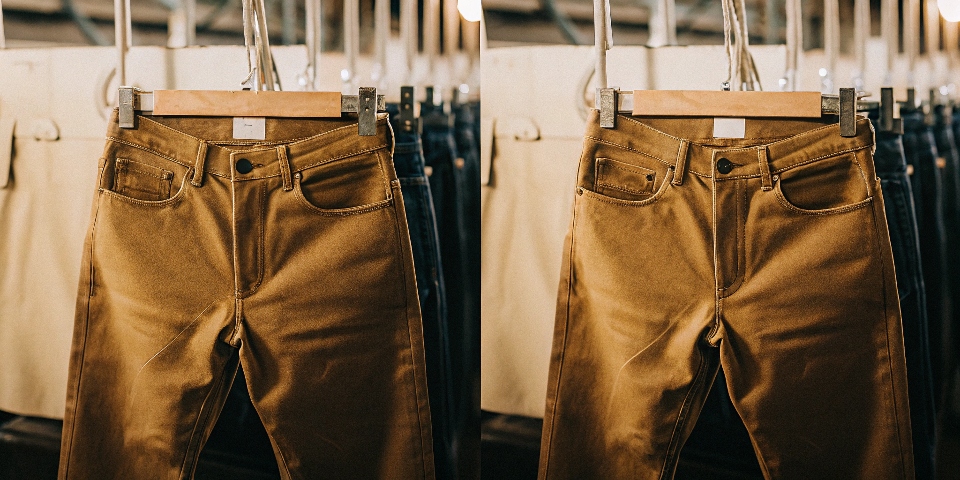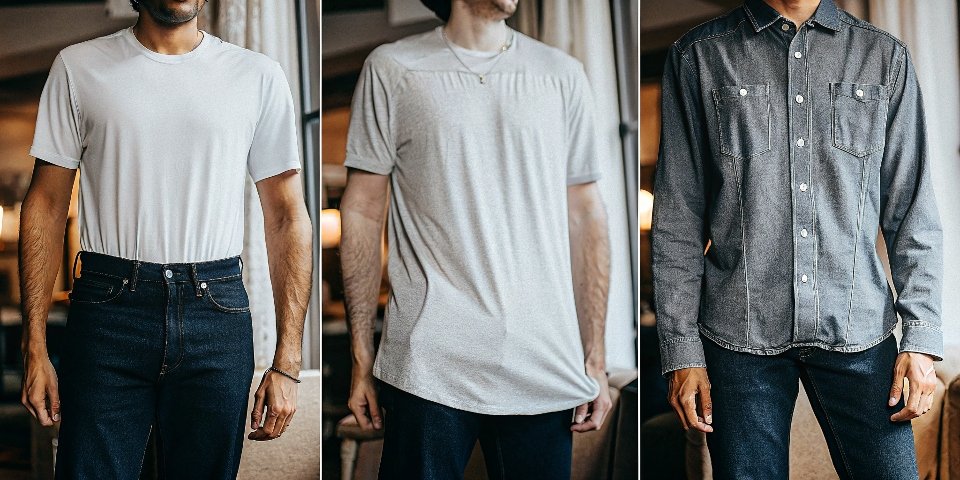You have a killer design for a new line of jeans. But when you try to figure out the production cost, the numbers are all over the place. How can you build a business plan when the price seems to be a total mystery?
The cost to manufacture a single pair of jeans ranges widely, from about $5 to over $30 USD. The final price is a mix of your choices in fabric, design complexity, hardware, packaging, and especially the washing effects and the labor costs of the production country.
This is the most critical conversation I have with every client who walks into my factory, DiZNEW. A designer like Dean might bring me a beautiful sketch, and my first job is to help him understand the real-world cost of every single decision, from a specific type of thread to a complex wash finish1.
The final price isn't a single number; it's a story built from dozens of small choices. Let's break down that story so you can see exactly where the money goes.
How much does it cost to get jeans manufactured?
You're ready to move from a sample to a full production run. But factory quotes involve Minimum Order Quantities (MOQs), making the total investment a big, scary number. How do you plan for it?
The total manufacturing cost2 is the price per pair multiplied by the factory's Minimum Order Quantity (MOQ). A simple pair at $8 each with a 1,000-unit MOQ means a $8,000 investment, while a premium pair at $25 with a 300-unit MOQ costs $7,500.
Factories need MOQs to make production worthwhile. Setting up the cutting machines, mixing the perfect dye recipe for the wash, and organizing the sewing line takes time and resources. Spreading that setup cost over hundreds or thousands of pairs makes it efficient.
When I provide a quote, I'm calculating the unit price based on several key factors. Understanding these will help you manage your budget. It's a balance. Sometimes a higher unit price with a lower MOQ is better for a new brand testing the market, while an established brand will want the lowest unit price and can handle a massive order. It's a strategic choice, and seeing the breakdown helps you make it.
| Cost Component | Low-End Example | High-End Example |
|---|---|---|
| Fabric | Standard 10oz cotton denim | 14oz Japanese selvedge denim |
| Design & Sewing | Classic 5-pocket, simple seams | Multi-panel, complex pockets, felled seams |
| Washing & Finishing | Simple rinse wash | Hand sanding, laser, tinting, custom damage |
| Hardware & Trims | Stock zippers and buttons | Custom-branded rivets, buttons, leather patch |
| Packaging | Basic polybag | Custom-printed bags, branded tags, labels |
How much does it cost to produce one pair of jeans?
You need to know the price of a single pair to set your retail margin. But a factory quote is a mix of materials, labor, and processes that can be hard to separate.
The cost of one pair is the sum of its parts. For a standard jean, this could be: fabric ($4-$8), cut-and-sew labor ($3-$6), washing ($2-$10), and hardware/trims ($1-$4). The huge variable is often the wash.
Let's look at a single pair of jeans as a recipe. The cost of the ingredients determines the final price. The biggest ingredient is Fabric. A typical pair of jeans needs about 1.5 yards of fabric. So, if you use a solid-quality denim that costs me $5 per yard, you have $7.50 in fabric cost right away.
If you choose a premium Italian or Japanese selvedge at $20 per yard, that's $30 before we've even cut the cloth. Next is Cut, Make, Trim (CMT)3, which is the labor. This covers cutting the patterns and sewing the pieces together. A simple five-pocket jean is straightforward. A jean with complex seams or extra panels takes more time and costs more.
My specialty, Washing, is where the cost can really change. A simple, dark rinse is quick and cheap. A vintage look that requires hand-sanding, grinding on the edges, a laser pattern, and a final tinting process can add $8 or more to the cost all by itself. It's the most artistic part of the process, and also the most expensive.
How much would jeans cost if made in the USA?
You love the idea of "Made in USA" for your brand. But you've heard the costs can be punishing. Can a brand realistically afford to manufacture in the United States?
Manufacturing jeans in the USA dramatically increases costs, mainly from higher labor rates. A pair of jeans that costs $15 to produce in a factory overseas could easily cost $40 to $65 to produce in a US-based factory, using the exact same materials.
I have this conversation with American designers all the time. The desire to produce locally is strong, but the economic reality is stark. The main driver is labor cost. Here's a realistic comparison for a mid-range pair of jeans. The fabric cost4 might be similar, let's say $8 whether it's sourced for my factory in Asia or for a factory in Los Angeles.
The hardware might also be close, maybe $2 overseas versus $2.50 in the US. The huge difference is the labor for sewing and washing. The CMT (Cut, Make, Trim) labor that might cost $5 in my factory could easily cost $25 or more in the US. Similarly, the complex washing process that costs $6 with us could be $15 in the US due to wages and stricter environmental compliance costs.
| Cost Component | Typical Overseas Cost | Estimated USA Cost |
|---|---|---|
| Fabric | $8.00 | $8.00 |
| CMT Labor | $5.00 | $25.00 |
| Washing | $6.00 | $15.00 |
| Trims | $2.00 | $2.50 |
| Total | $21.00 | $50.50 |
Choosing "Made in USA5" is a branding and positioning strategy. You pay a premium for a powerful marketing story, but it places your product in a much higher retail bracket.
Is it expensive to manufacture clothes?
You're thinking about starting a clothing line. But you're worried about the high costs and wonder if jeans are a particularly difficult place to start.
Yes, manufacturing clothes can be expensive, and jeans are one of the most complex and costly casual garments to produce. They require heavy fabric, specialized machinery, strong hardware, and a separate, multi-step washing process that simple t-shirts or shorts do not.
To understand the cost of jeans, it helps to compare them to other clothes. A simple knitted t-shirt is the cheapest to make. It has a simple pattern and minimal sewing. Its cost is all about the fabric. A woven dress shirt is more complex. It has a collar, cuffs, and a placket, which require more skilled sewing. Jeans are on another level entirely.
They use heavy, durable woven fabric that is more expensive and harder on the sewing machines. They require unique, strong seams like the flat-felled inseam. They need metal hardware—rivets and buttons—that has to be mechanically installed. But the biggest difference is the laundry. After a dress shirt is sewn, it's just pressed and packed.
After a pair of jeans is sewn, it goes to a whole different facility—the laundry—for washing, softening, and distressing. This finishing process is what gives jeans their character and is a major cost center that most other garments don't have.
Conclusion
The price to make jeans isn't one number. It is the sum of your decisions on fabric, design, washing, and production location. Understanding this helps you create the perfect product for your budget.
-
Explore the artistic and cost implications of complex wash finishes in jean production. ↩
-
This link will help you grasp how to calculate total manufacturing costs effectively. ↩
-
Discover the significance of CMT in the garment industry and its impact on costs. ↩
-
Understanding fabric costs is crucial for pricing your jeans competitively. ↩
-
This link will clarify the financial implications of producing jeans domestically. ↩

